Part One – Roots
“Our native soil draws all of us, by I know not what sweetness, and never allows us to forget.”
–The Poems of Exile: Tristia and the Black Sea Letters, Ovid
I’ve been reflecting on successive trips to Austria and a more recent foray into Oregon. One abiding thought is that you meet good people wherever you go. They are generous with their time, easy with their knowledge, relaxed in their environment. You are always a guest, often invited into the family home to share their food. Wine is the catalyst for such very human interactions. You drink, you talk. When tasting with the grower you must use the information they give you to create a context for the wines – your role is to understand rather than dissect. These wines repay scrutiny, which is not the same as being super-analytical. And if your responses are hedonic, the heart as well as the head chiming in, so be it. You have properly tuned into the spirit of the place, the grower and the wine. After these wine trips I have tried not to over-think. Sometimes, I don’t know why I have a feeling about certain wines; they impress themselves upon me in subtle ways which probably means that there is more to them than meets the eye.
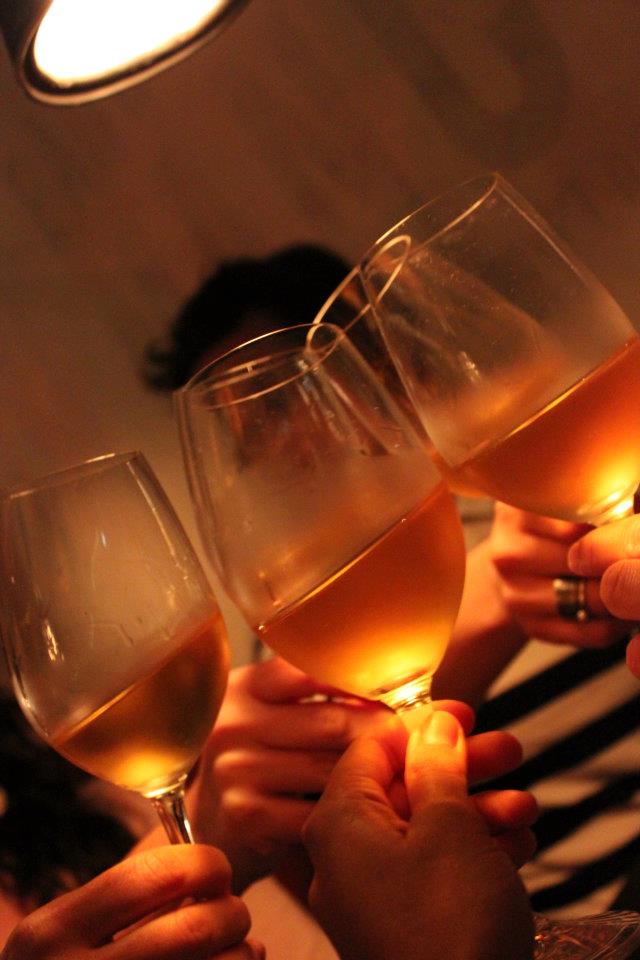
What is in the glass is always the result of many unseen processes. It is tempting as a taster/would-be wine buyer to level the playing field by using objective criteria to judge a wine. This is akin to saying that only externals matter and that apples can be compared to pears. We judge people differently, for example, once when we get to know them. On first acquaintance we may only encounter shyness, prickliness, external awkwardness, but that person may be totally different inside. The best wines, like the most interesting people, deserve time.
It’s not really a fair exercise to compare and contract my experiences in Oregon and Austria, but I shall do so anyway. Yes, there are similarities – and I’m not just talking about Chad Stock’s original takes on Gruner Veltliner and Blaufrankisch. Oregon has been compared to Burgundy, but Oregon is like… Oregon. Put a parallel through a country and you may follow it around the world – ergo, Oregon becomes proto-Burgundy and Burgundy, as we know is the spiritual home of Pinot Noir. The same, of course, has been said of Central Otago –the southern mirror image of these two regions. The truth is way more subtle.
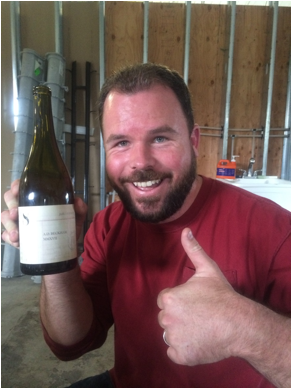
So much talk about winemaking presents it as deterministic discipline. Never mind the fact that growers will be working in different places with different geologies and microclimates, hail from different cultures with different experiences and be using a different set of ingredients. Never mind that the grower may be an individual with the will guide the wine in the way that he or she sees fit. Never mind the personality of the vineyard, which may have been there long before the grower arrived. Never mind the thousand and one other random variables that can make the wine the way it is – unique. The orthodox view seems to be that you can only achieve the precisely desirable outcome with a fixed methodology. Winemaking, after all, obeys the strict laws of chemistry and micro-biology. So, by that token, it must be an exact science. You might say the same about cooking. But there are dozens of cooking methods – you can leave things raw, you can grill them, steam them, fry or roast them (or even a combination of these) not to mention use a variety of oils, butters and seasonings. There may be little or no transformation; there may be a profound transformation. The prescriptive oenological approach to winemaking is purposive (a means to a commercial end), relying on constant manipulations, transforming grape juice until it is recognised as a product consistent with other like-named products. This means the consumer becomes part of this interdependent cycle and is led to assume that manipulated styles are the truest expression of the grapes and the region. The tail of the product placement wags the tale of the wine. Or to put it another way, it is the difference between when the Australian wine industry became ossified. Now with the new young dudes who are making wines that they themselves want to drink Australian wine has the chance of becoming Aussie-fied, which is to become more than a shallow catch-all brand, but one that reflects the diversity within its borders.
Vignerons are not cyphers. Those who work in the vines, especially those who understand the natural cycles of the vineyard, want to capture that energy in the wines themselves. There are others who ask themselves: what if? The latter are those, have travelled or worked outside their region, who like to drink different wines and may have had either a Damascene epiphany (or a gradual conversion) enabling them to break free of current orthodoxies.
Respecting Austria
In Austria we have noticed a gentle changing of the guard though the enfants terribles are not so terribles. Change is often incorporated into tradition. You will often hear the word “respect”, respect for the previous generation (whether their methods were correct or misguided), respect for place, for terroir, for nature. Many of the producers we encountered were deeply rooted in their communities. Martin & Anna Arndorfer, for example, are proud to live and work in Kamptal, especially in the Strassertale. Despite its long history of winemaking and viticulture, it doesn’t inhibit their personal approach, but neither will Martin not dismiss the past: “Talking with the older generation provides a way of learning and understanding about the vineyards of our village; to see pictures of the vineyards from the past is very inspiring.”
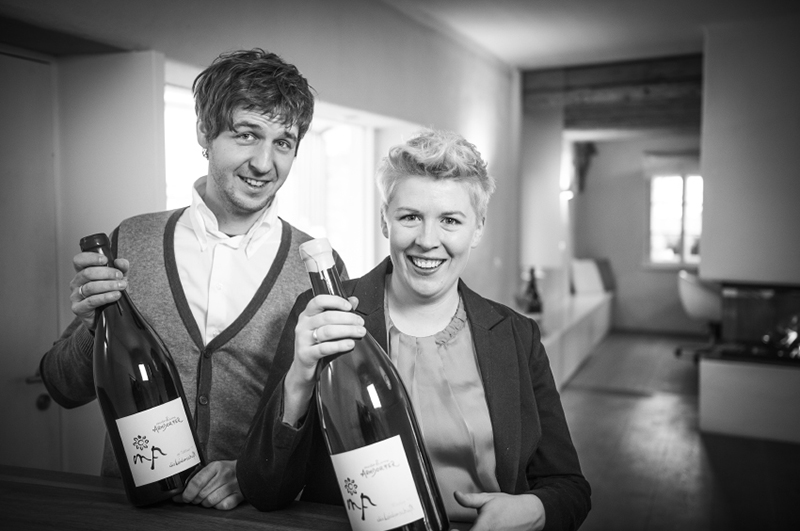
For example, why was the vintage 1947 so outstanding? Maybe the sun, maybe the small crop, maybe the pruning, maybe the” trellising system”, maybe crushing the grapes in the vineyard, maybe not having a tractor, nor herbicides and fertilizers, or maybe a little bit from everything. Anyway, I think it is good to learn from our history and use the experience from older generations, but combine it with the knowledge of the present time. The cheapest thing we can do is to keep thinking about our work and our decisions…History gives us a bigger background for this idea…
Is the region, or perhaps other winemakers, ever resistant to change or new ideas?
The question is: what are new ideas or changes? Most of the wineries certainly want to produce wines that show the character of the origin – village or single vineyard – to show a very typical wine from the region. Sometimes people call it traditional. I got the impression that there weren’t many growers in Kamptal (or Wachau or Kremstal) prepared to innovate in the winery like the Arndorfers, Alwin & Stefanie Jurtschitsch, Matthias Warnung and Matthias Hager. Whilst embracing tradition in one sense they have also liberated themselves from it in another. Here are growers working with, for example, skin contact, long ageing, unusual formats (eggs, stainless steel barrels, wood of all shapes and sizes), low or even no sulphur. It is a kind of systematic knowing diversity. The wines look outwards whilst capturing the historic terroir of the Kamptal.
And then there is the terroir. The Jurtschitsch plots on the fabled Heiligenstein are inspiring places to walk. Alwin and Stefanie have created small heathland zones to attract insects and creatures and restored the terraces using local stone. From the healthy soil beneath your feet, the cheerful birdsong to the vivid light bouncing off the rocks off the terraces there is a brightness and palpable energy in their vineyards. This young couple are solicitous about the future of the Heiligenstein; they see vineyards being abandoned, crumbling terraces, people ripping up old vines, the loss of a magnificent patrimony.

Back to the tasting room we tasted the fruits of their special project called Entdeckungen. We tried the Amour Fou (Grüner), Pot des Fleurs 2011 (Grüner also) and Quelle (Riesling). Wildly aromatic and expressive, unfiltered and unsulphured, the wines possessed a raw juice quality. One was instantly transported to those vineyards, vibrating with life. Alwin wants his wines to vibrate in the same way. The specific terroir is one thing – Alwin, Martin Arndorfer and Matthias Warnung see the vineyard and the soils as the beginning of the process, the evolution of the wine’s identity. All the minerality from carefully nurtured soils naturally communicates itself and has to be allowed to communicate itself, but the wine’s complexity is filtered through other natural processes and winemaking decisions, shaped, for example, by the interaction of the ambient yeasts (and the subsequent ageing period on the lees) and also by the very container in which the juice ferments and matures. Alwin and Stephanie use huge foudres, smaller barrels, stainless steel barrels, small tanks, demi-johns and there – in the cellar – raised on a plinth was a gorgeous Flowforms ceramic egg. The extraction of flavour from the wine is not about forcing the issue but moving in different formats, thereby discovering different “taste-shapes”.

Liberated thinkers question every aspect of vine growing and winemaking. They are no longer slaves to convention (that convention is, at most, two generations old). Many vignerons are cultural archivists, resurrecting grapes, wine styles and traditions that were abandoned in the post-war dash towards chemical farming and flavour-stripping winemaking techniques that resulted in commercial homogeneity. They are not harking way back for the sake of it, but are conscious that history has a wider sweep than 50 or 60 years, and that to understand the future firstly you need to understand the past.
The journey of single wine comprises many steps and interesting detours. Matthias Warnung worked with Craig Hawkins who worked with Dirk Niepoort. His sensibility is similar, but his approach is necessarily different. Kamptal is not Swartland, after all. However, his mindset and approach is at variance with other local growers. With Alwin and Stefanie you have a further element in the equation. They have taken over a winery with a famous name, one that trades on its traditional image. Although it would be tempting for them to renounce everything in the immediate past you have to build on the foundations of what is already there. And so they have created their own separate project to pursue their wine dreams and fantasies and will gently guide the mainstream wines towards a more natural idiom. The Arndorfers are also custodians of the family business – the transformations in winemaking must be subtle rather than alienating. They have created their own label, which they have further subdivided into four further bands (rather than brands), according to the style, the feeling behind the wine, and the degree of experimentation involved.
The talk in Austria is not so much opposing natural and conventional methodologies, but centres around tradition. The modernists have taken the word and moved it on. They look back because without the history of the vineyards and the sense of place there is nothing to draw on. However, they are seeking to interpret their patrimony in a more dynamic fashion – working without chemicals in the vineyards, reviving the health of the vines, using natural yeasts ferments at ambient temperature and slowly raising the wines until they find their own balance.
The growers who are experimenting and pushing the boundaries are those have travelled and worked abroad. They have returned, wanting to translate their ideas in the wines of the region. As such they are still isolated in their respective regions, at very least perceived as unorthodox. There is a communitarian approach in Burgenland that assists the personal as well as collective development of growers in the region. In 2007, for example, a group of vintners joined together to form a group called “Respekt” with the aim of applying the principles of biodynamics in winegrowing. In autumn 2006 the production guidelines were defined in detail. In 2010 (with the harvest of autumn 2009) the first Respekt wines were certified. Respekt is an association of 15 members from 3 countries, though based in Austria. It has dedicated itself to produce wine of pristine quality by employing biodynamic methods. Having the deepest respect for the elements of earth, water, air, light and fire, as well as soil, flora, fauna and human beings, the goal being to preserve their autonomy and sovereignty.
It differs from organic accreditations in that the vignerons impose upon themselves much stricter conditions than regular organic farming does. “We can combine our knowledge of wine-growing with the philosophy of biodynamic farming. And eventually, because we not only focus on producing wine all by ourselves, but try to incorporate our family, friends, co-workers, partners and clients in the process.”
Take Claus Preisinger. He made his first wine in 2000 when he was a mere twenty years old. His first Pannobile came four years later. (Pannobile is another local group of growers that convene to uphold standards and to taste and identify wines that typify the best of the region)
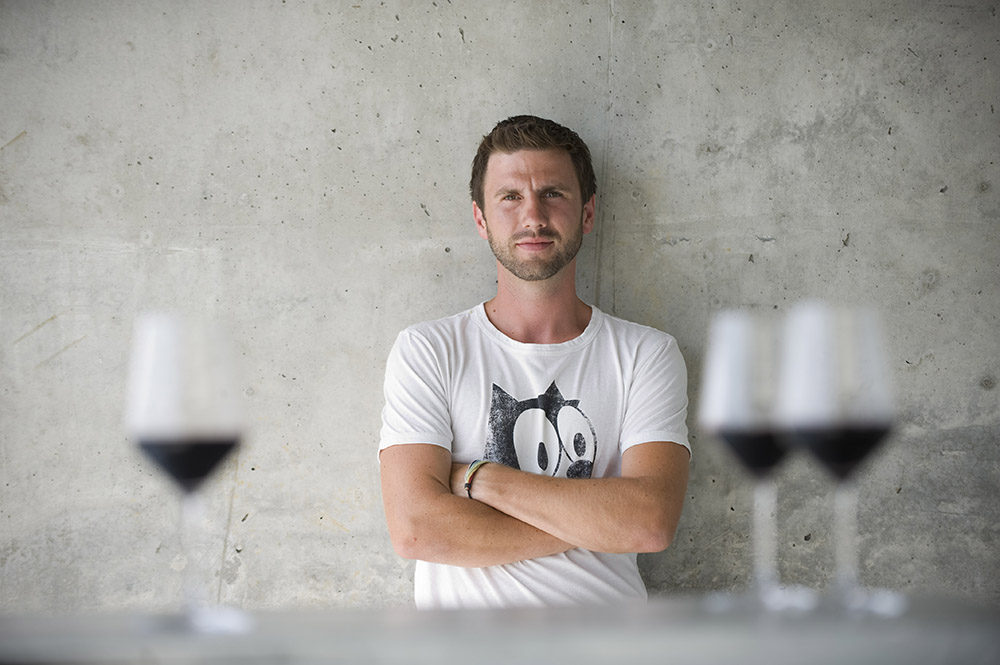
A young confident vigneron he works according the precepts of Rudolf Steiner and in the cellar is a purist and quality-fanatic using taste and gut instinct as his guides. His vineyards are scattered throughout the Pannobile land. Whilst having a widespread patchwork of the vines makes the work harder, the variety it yields in terms of raw material means that the grower is able to play with a wider palette of grapes and terroirs. Steiner principles underscore the viticulture: humus with compost from cattle and horses and homeopathic care of the vines. While the approach is simple and natural, the results are sophisticated, in the sense that the wines have a strong sense of internal unity. I think a lot about my wines but not only with my head but with my heart as well. My feeling, instinct, nose, mouth, and gut decide about my wines. It is as simple as that and as complicated as that.
He works naturally, always with indigenous yeasts, not controlling the temperature, adding to or taking from the wine. The choice of vats and barrels does determine the path and shape the final outcome of the wine, however, and there are a variety of vessels from barriques to foudres and even several qvevris also (resting on tyres rather than being underground). For Claus Preisinger, read also other Burgenland producers such Judith Beck, Lichtenberger-Gonzalez, Andreas Gsellmann, Michael Andert and Franz Weninger who work with minimum additions and allow wines to gradually find their own path.
Talking to all the growers it’s clear that they view treating the vineyard as a living organism as well as working without chemicals or additives in the winery as a prerequisite for making quality wine. There is a certain Occam’s razor logic to this approach –that by not over-complicating procedures you arrive naturally at a truth-in-wine. Biodynamics is predicated on observing and responding to the needs of the vineyard rather than following a prescriptive course of action. Working responsively in the vines tends to be mirrored in the actions in the winery. Knowing what you have (in the quality of grapes) means that you tend to do what you feel is right. It is not pure science – there is intuition, gut instinct, feel and taste.
Styria (or Steirerland) seems to be a viticultural island, a distance from Vienna, yet even here, growers may bond and create healthy agendas. One such tiny group is called Schmeck das Leben. This is wine culture that is humble to point of being self-effacing. The growers are not heroes in their own region and their practices are considered highly unorthodox, to say the least. They are not crazed ideologues – though certified by Demeter, Austria, they have little interest in the cachet of titles or the paperwork. They work in the way because it is right for the environment, right for the wine, right for them. There is no commercial imperative, other than what one needs to make a living.
They all believe that wine is one element in the whole. You often hear the word happiness and personal fulfilment when you are talking to these guys. This is the human component of biodynamics based around the notion that one is healed by one’s interactions with nature and the land. Yes, Nature can also mean nurture.
Biodynamics revolves around biodiversity and trying not to damage natural organisms from the birds to the bees to the tiniest cell life. A functioning vineyard must live on every level. The vignerons pay particular regard to the soils and avoid using tractors or cutting the grass aggressively, reduce copper and sulphur treatments to the bare minimum and use teas and biodynamic sprays to activate and salve.
The vines are straggly. Bunches are uneven, grapes will rot and be discarded. The training systems are peculiar to the vineyard, the region and the grower – more concerned that the energy of the vine goes into the flavour of the grapes.
Terroir is important, expressed through intensity of flavour rather than primary aromatics. The solidity of the wines is built on pillars of texture and tannin rather than acid and alcohol. Austrians have a feeling for barrel – slow maturation, breathing. Oak is prominent but in the overall integration it is texturally incorporated rather than an additional flavour. The ageing in wood relaxes the juice but confers a certain architecture. The wines aren’t noticeably woody, but they have a wood influence, in the way that any ageing vessel will help to shape the final wine. The tannins seem to emanate from the grape juice itself. Sauvignon is the glory of the region and the grown-up way that it is handled yields a mixture of spiciness and mouth-weight. Many of the wines had distinctive herbal inflections (wild mint). The key here is to thin out the leaves during the ripening period, harvest late, allow malolactic and long ageing in barrels.
The final piece in the puzzle is that they have all but relinquished sulphur as a preservative. Here, to coin a phrase, one can literally taste the difference. Each of the vignerons show us examples of wines made with minimal additions – they are good, sturdy, irreproachable wines. We then taste the same wines (although from different vintages) without sulphur. The wines taste liberated and expressive as if the merest dose of SO2 had throttled back on the fruit and terroir. Wine is a subtle, living organism – such a simple comparative exercise illustrates how it breathes, how it behaves. We always sampled in massive Burgundy balloons; on several occasions we were allowed to try wines that had been opened 2, 3, 4 weeks and even longer. You notice that the oxidation is barely perceptible, the colour has not changed, the freshness is enhanced rather than dulled. It goes against the grain of wine knowledge, but so much of we have seen and tasted speaks volumes in its own idiom. As the growers might say it is instructive to accompany the wine on its journey and “to take time to make one’s soul happy”.
Traube, Liebe & Zeit. Grapes, Love and Time.
This perspective is refreshing as it gives a deeper meaning to being a vintner. Growing wine is (I like that expression) about helping to be part of a process that gives rise to unique sensations and feelings (both in the grower and the drinker). It is not about creating a product directed towards an audience of critics and consumers. It is accepting what nature bequeaths, it is about respectfulness, sensitivity, integrity and generosity. This is more than a political pocket of natural resistance or polemical approach to biodynamic, it is group of people farming in the right spirit, doing what makes them happy, the result of which turns out some pretty stunning wines!

Who’s drinking these beauties? The cultural heartbeat is always in the big city, in this case, Vienna. Go to most restaurants, even here, however, and the wine selection by all accounts will be pretty conservative and uninspiring. While the natural wine scene (if one might term it thus) is not so extrovert in Austria, there are a few green shoots. Moritz Herzog, an importer and distributor, runs a company called Weinskandal, bringing in some fabulous artisan wines from around the world and looking after the interests of local growers. Steve Breitzke is the head sommelier and buyer for Le Loft Restaurant, rightly reputed for its brilliantly curated wine list. Then there is the charming Pub Klemo with a small but perfectly formed selection of unusual, often natural wines. Last year, RAW Vienna, helped to crystallise the independent artisan wine scene even more, bringing together the best of new wave Austria with other growers in Europe. There is no movement, but there are currents and little clumps of diversity, frictional personalities all of which serve to create the sense that Austria as a whole is a country where change is happening and quality is continuing to improve. The revolution is starting with lots of tiny steps in different locations – that’s what makes it sustainable.
Oregon – The Gentle Pioneers
In Oregon there is (understandably) not the same rootedness that naturally derives from generations of vine growers in a single region. People have gravitated into wine for a variety of reasons – and some of those for the best of reasons. If one were to generalise we might identify certain recurrent themes – that this is a wine industry where much of the consumption is local, where critical plaudits still help to spur sales and where Brand Oregon is dedicated to promoting the state as the alternative spiritual home for Pinot Noir. All these things may breed complacency. There are positive signs: many of the growers are artisans, practise organic or biodynamic farming and some have a truly pioneering mentality.

Kelley Fox is highly attuned to the song of each vineyard. She would make “spirited” wine, of course, wherever she was farming. Her approach is subtle and responsive; for her grapes are matter waiting to release the energy of the vineyard, and the wined are the liquid containers of that energetic potential. She is a humble exponent of the personal give-and-take of biodynamics, the notion that the entire process of winemaking involves tapping into a primal cosmic energy; a process that is sharp and painful in that it often takes over your whole life, the love in your body, your integrity, and your perception of the nature within you and without you.
Nature never hurries. Atom by atom, little by little she achieves her work ~ Ralph Waldo Emerson
For growers such as Kelley (and there are not many like her) nature itself is the real sublime artist, whilst the vigneron, the natural artisan vigneron, labours to capture its indifferent beauty. Like the artist in Joyce’s Portrait of an Artist…she never puts herself at the forefront of the enterprise, remaining within or behind or beyond or above her handiwork, invisible, refined out of existence. Of course, she is a sensitive and sensible editor, makes myriad choices and has the technical savvy to respond to the needs of the wine. She speaks eloquently, however, about liberating the story of the wine, part of the process of channelling of the energy of the vineyard, and, that the once the wine is born, it no longer belongs to her (and becomes its own free spirit). This returns us to the notion of humility and respect, that farmers are stewards or guardians of the land. What they take they also need to give back, which is why this form of vine growing is not just physically demanding as the process of endless nurturing inevitably is, it is equally spiritually demanding. The process is two way; the vineyard can be a healing place also.
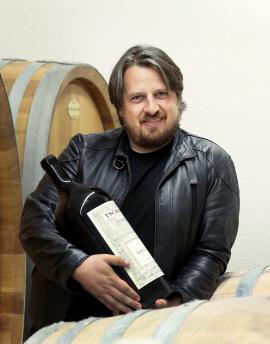
Christian Tschida in Burgenland dissociates himself from the wine in a similar way to Kelley. It’s as if the creative process empties them of their personal resources, in the way that an actor is drained after a performance on stage, or a painter has nothing left after putting heart and soul into completing a canvas. Neither Kelley nor Christian are keen to discuss their wine; it is what it is. The same is true of other growers such as Didier Barral, Courtois, Cousin – they understandably deprecate the reductive critique that perpetually strains and creaks to circumscribe wine and reduce it to a neat formula. Great wine is organic in the truest sense rather than presented as colour-coloured blocks for instant gratification. We should appreciate the result is always in the bottle, undeniably pure, fierce and mutable, tonally dark yet limpid in purity. For me Kelley’s wines speak of earth and plants and dissolved rocks or as Wordsworth would sat “rolled around in earth’s diurnal course/with rocks and stones and trees”. They also have heat in them that you will only find in wines where there has been a vivid exchange between the vine and the earth in which it stands.
Uncompromising purity. In Kelley’s and Christian’s wines you get the same impression of latent energy. It is difficult to describe, but like anything natural, it feels as if every molecule of the wine is linked to all the others in a fluid, harmonious whole. And isn’t that the real magic we’re always looking for, that sensation that the wines were always meant to be this way, utterly individual. The most alluring (and occasionally confounding examples) possess what Dun Scotus called haecceity, those discrete qualities or characteristics of something which make it so particular.
These are profound, rooted wines. Kelley’s Pinot Noirs are called Momtazi and Maresh for a reason that they bear the undeniable imprint of place as well as the way that Kelley works in those unique places.
When I write about any place I am looking for the simple essence neatly distilled by our Styrian friends into that phrase: grapes, love & time. Kelley’s wines, if I may attribute them to her, embody that deceptively simple-sounding formula.
Part 2 to follow – What’s new in Oregon?



